Saturday, March 8, 2014
STEPS IN DEVELOPING A LANDSCAPE DESIGN
Steps In Design
1. Develop a plot plan.
2. Conduct a site analysis.
3. Assess family needs and desires.
4. Locate activity areas.
5. Design activity areas.
6. Plant selection and placement.
Develop a Plot Plan
It is difficult to visualize certain aspects of design without putting it to scale on paper. The designer should think with drawings or sketches and make the mistakes on paper not on the landscape site. The plot plan should consist of 1) accurate house placement on the lot, 2) accurate lot and house dimensions with window and door placement and 3) existing driveways and/or walks. It saves a lot of time if the customer has an accurate plat of the house and lot and a house floor plan with outside dimensions. These plans maybe secured from the builder, developer or county or city property records. Although the floor plan scale will probably be different from the scale you use, it will still be easier to convert the scale than to physically measure the house, lot, etc.
Once the house position on the lot has been determined, this should be drawn to a predetermined scale on tracing paper placed over grid paper. Commonly, 1 inch equals 5 feet or 1 inch equals 10 feet, but you may choose another scale based upon your drawing equipment and project dimensions. Recommended drawing equipment includes: drafting pencils, T-square, scaled rulers, triangle, art gum eraser, drafting tape, grid paper (8 or 10 squares to the inch) and tracing or drafting paper. The designer must have a firm, steady working surface.
Conduct a Site Analysis
A complete survey of the customers property is essential. The plot plan will assist you in organizing the information from the site analysis. A thorough site analysis can save you time and money. Existing vegetation, natural factors and features, views, noise levels, utility placement, easements/setback lines and primary architectural features of the house should be noted.
Existing plants should be examined. Tree condition and placement should be recorded. Trees on adjoining property that would affect shade patterns on the customers lot should also be surveyed. This information is essential to designers, especially since it is their responsibility to blend this home into the natural or existing setting, or to create a setting to be functional and to complement the structure. Shrubs, groundcovers and grasses should also be examined as to their condition and potential use.
The landscape horticulturalist may also be involved in protecting existing vegetation during construction. It may be desirable to block vehicular traffic from areas close to valuable trees.
Natural factors and features of a landscape include house orientation, land form, soil conditions, rainfall distribution, seasonal wind pattern and micro-climatic conditions. House orientation affects the exposure of various portions of the house to the sun ( Figure 11 ). This knowledge is essential so the designer can provide shade in important spots and locate activity areas appropriately. For example, a southeastern exposure is generally the most comfortable spot year-round while a western slope will be hot in the summer and cold in the winter.

Figure 11
Land form refers to slope or land elevation changes. It determines surface water drainage patterns and is essential knowledge for the landscape horticulturalist in developing functional and aesthetically pleasing landscapes.
Soil characteristics will determine selection and placement of plants. Soil pH, nutrient and waterholding capacity and drainage should be considered. Native fertility levels and soil characteristics may be indicated by existing vegetation. Turkey oaks on the property usually indicate dry, infertile soil. Native cypress trees usually indicate poorly drained soils exist or did exist in that area.
Rainfall distribution can be determined on a regional basis. Periods of heavy rainfall can magnify the problems of shallow soils or a hardpan resulting in unwanted standing water. Sometimes these conditions may require the engineering of drainage modifications by some type of tiles or pipe. Often the conditions simply require careful plant selection.
Predominate wind directions differ with the area of the state, the season and the time of day. Where the wind direction differs in summer and winter, plantings can be arranged to block the cold winter winds from a patio and direct summer breezes into this same area ( Figure 12 ). While conducting the site analysis, be sure to look for existing wind breaks provided by plants and structures on the property or on adjacent property.

Figure 12
All of these factors interact to create micro-climates. This means that the conditions in a isolated spot may differ considerably from the conditions in another area of the landscape. The designer must consider those variations in order to "fine-tune" the landscape plan and plant selection.
Views should be identified that are to be preserved or accented. Likewise, less desirable views must be considered so screening can be planned. Views and activities 30 feet (9 m) or so from the property line must be surveyed. During the site analysis, views should be observed from inside the house to outside and from outside to inside the house ( Figure 13 ). Observe the neighbors property from positions on the customers lot and view the customers property from the neighbors lots if possible. The house should also be observed at multiple angles from the street. Pictures from an instant camera can be helpful in reminding the designer of specific views when sitting back at the drawing table.

Figure 13
Surrounding distractions must be identified. You may need to question neighbors or the property owner about these factors. Record a noise source like roads, factories, saw mills, etc. and plot the direction and distance of the source. The time of day for peak noise levels can be important as well. It may be necessary to return to the site during such a period. Other distractions could include glare or odors.
Utility lines may be on poles or underground. Locate the position of these on the plot plan. Also locate the electrical meter on the house, the air-conditioner unit and water outlets. Consider the position of television and telephone cables, water lines and sewage lines, or a septic tank and field line. Television cable companies and the telephone company will usually locate their service lines accurately. However, these services must be requested in advance.
Architectural style of the house is of primary importance. Specific details of interest must be identified during the site analysis. Things like the height of windows, the height of house corners from the ground and overhang widths should be considered. Is the house guttered or should it be? If so, locate the outlets. Notice major traffic problems so proper access and movement can be provided.
Assess Family NeedsA landscape should be an outdoor extension of indoor living areas. It should be functional and provide space for family activities. Before the designer can create such an environment, knowledge of certain family characteristics is essential.
The questions used in the form at the end can be among those asked of the customer.
Locate Activity AreasOnce the family needs have been determined, areas for these activities must be located on the property. Their placement should be considered in terms of the house plan and in relation to other activities in and adjacent to the property. These activity areas could include a public area, entrance, living area, quiet zone, service and work area, or vegetable or cut-flower garden plot.
These areas should be defined on the plot plan or maybe on a piece of tracing paper laid over the plot plan. Actually sketch the outline of these areas ( Figure 14 ). Be sure to include all needed activity areas and draw them to scale and to the size necessary to accommodate the activity, yet still fit within the property lines.

Figure 14
Two major considerations for the placement of areas must be emphasized. 1) Place outdoor areas in relation to indoor activity areas ( Figure 14 ). The outdoor living or entertaining area should be an extension of the family or living room in the house. The service area and work area may be an extension of the laundry room, kitchen or garage. 2) Arrange areas relative to the activities in each and activities on adjoining property. For example, do not position the childrens play area beside the quiet zone. Always leave a clear view to the childrens play area from some identified observation point like the kitchen window.
Design Activity AreasA systematic approach should be taken in designing activity areas. First, determine the objectives of the design and establish the general type of plan -- formal or natural. Plan for structural needs, consider land form modifications, determine traffic flow, develop bed form and then specify plant materials.
Structural needs should be considered first. If a storage building is needed, a level spot and access must be planned. Required access may mean a path or limited vehicular access to haul in firewood, etc.
Land form information derived from the site analysis can be used now. Do surface water drainage problems exist? If so, determine how to correct them. Engineering and legal considerations are involved in major surface water drainage problems. Seemingly simple solutions may affect someone elses surface drainage. Consider grassed waterways, paved waterways or possibly drainage tiles. Drainage problems may not exist but land form modifications could be used to create interest, or help block undesirable views or noise. Care should be taken not to create surface water drainage problems with land form modifications.
Existing land form may have slopes which will erode. Existing slope or steepness will determine what actions should be taken. Ground covers may be the answer for long, gentle slopes while terraces with railroad ties or blocks may solve the problem of a short, steep bank. Grass should not be put on slopes greater than 1:6 (1 foot of rise per 6 feet of run) because of maintenance safety. Other ground cover materials will probably hold a 1:2 or 1:3 slope. Bark mulch should not be placed on a slope greater than 1:10.
Bed form, traffic flow and plant selection and placement utilize art elements and design principles previously discussed. These can best be covered as the development of specific areas is discussed.
Public Area. The public area is the portion of the residential landscape the public sees and uses. The current trend toward smaller residential lots encourages the development of some of the front yard for family living. The public area contains the driveway, parking, walks, open space and entrance area. The purpose of the public area is to enhance the home, provide comfortable access and lead the visitor to the entrance.
Foundation planting is not all of landscaping but can be a vital part of functional landscape design. Too often foundation planting is overdone and left to stand along. History reveals that foundation plantings were used to block the view of raised foundations and to slow cold air movement under the house ( Figure 15 ). Although these needs do not often exist today, some landscapers and homeowners think it is a must to cover every linear foot of the foundation with plants.

Figure 15
The objectives of foundation planting are to focalize the main entrance, compliment the architectural style of the house and to break long continuous lines of the house and blend it into the surroundings. The designer should avoid competing elements which detract from the main entrance and the house in general. An isolated bed in the middle of open lawn area is one of these competing elements. Plants should be selected which can easily be maintained to proper scale with the house. This is probably the most common failure of foundation plantings.
A general rule of thumb is that the height of plants in the foundation planting should not exceed two-thirds the height of the wall at house corners ( Figure 16 ). Generally, plant height should not exceed the height of a line extending from the doorway to this imaginary point at the house corner. This does not mean every house should have plantings this high.

Figure 16
Balance in landscape design is not always necessary. Imbalance may be used with architectural features of some houses to create desirable, interesting effects. However, when balance is suggested, it should be achieved.
Symmetrical balance has been overdone in residential landscape design. This approach seems formal and monotonous ( Figure 17 ). Asymmetrical balance is often more desirable for residential landscapes as balance is created without monotony. Size is balance by mass and texture in this example. Architectural style may dictate the use of symmetry or asymmetry. Driveways, parking and walks must be functional. They must be positioned to provide easy access from points of entry onto the property to the entrance of the house. Too often walks are placed from the street to the front door with no consideration of access from the driveway to the front door. Many times a walk dividing the front yard is not necessary and may detract from the house.

Figure 17
Walk and driveway surfaces should be selected based on traffic demands. Low traffic walks and driveways may be surfaced with less expensive materials such as bark or gravel, but walks and driveways with high traffic demands should have a hard surface.
Walks accommodating two people abreast should be at least 4 feet (1.2m) wide ( Figure 18 ). Walks for one person should be at least 30 inches (74cm) wide (Figure 18). A straight driveway for one car should be at least 8 feet (2.4m) wide while 14 feet (4.3m) is required for two cars side-by-side. Circle drives should have a minimum inside radius of 18 feet (5.5m) and an outside radius of 32 feet (9.8m) with a surface width of 14 feet (4.3m). Steps should be designed with human comfort as the top priority. Generally, a taller step, one with greater rise, should have a longer tread area. A handy rule of thumb states that twice the rise in inches plus the tread should equal 26 or 27 ( Figure 19 ). Ramps for wheelchair access are necessary or desired in some residential landscapes. The average wheelchair user can negotiate a 5 percent gradient independently and the minimum width is 3 feet (90cm). The bottom and top approach to a ramp should be clear and level for a distance of at least 5 feet (1.5cm).

Figure 18

Figure 19
Driveways must be wide enough at the street to allow cars to merge easily into the flow of traffic. The higher the average speed of the street traffic the wider the mouth of the drive should be.
The view of street traffic from the driveway entrance should not be blocked. Large plants placed along the driveway entrance create a dangerous situation. Plants on the outside of a curve in a driveway or highway aid the driver by giving definition to the traffic flow. Make sure such a planting blends into the total design. A plant screen on the inside of a curve in a driveway or highway is hazardous because it blocks the drivers view of the road ahead.
Trees can be used in the public area to soften lines, provide shade and enframe the house ( Figure 20 ). Also trees placed in the backyard can provide an excellent background for the house as viewed from the street. Vertical lines of many houses can be effectively softened by a small tree planted in conjunction with other plants at a corner. Tree shape is very important. A low-branched, rounded tree softens this line while a slender upright tree only accents the line. Trees with a lot of exposed trunk, like a sabal palm, will also accent and not soften these vertical lines.

Figure 20
A long low house (ranch style) can be made to appear taller in relation to its length by proper placement of plant materials ( Figure 21 ). Larger trees planted as a background break the horizontal roof line. Smaller trees spaced a few feet from the ends or corners of the house would also help the house seem taller in relation to its length.

Figure 21
A tall slender house seems longer when few or no trees are placed in the background but medium-sized, rounded trees are positioned on either side of the house ( Figure 21 ). Plants placed near these trees should be shorter and decrease in height the farther from the house they are positioned. This planting design effectively created a sloping line to replace the strong vertical line of the house. The house then appears longer in relation to its height.
Trees positioned for shade must be carefully located. The designer must learn what area needs shade, and during what time of the day and what seasons the shade is needed. This information will determine where to plant the trees relative to sun angle, sun direction and areas to be shaded.
A moderate amount of open area in the front yard can create the feeling of a large expansive area that allows the observers eye to move from the street to the planted areas. The planted areas can then direct the observers eye to the appropriate place. Some family game activities need not be in the private living area and can be accommodated by open portions of the public area.
Entrance. The entrance should be an area of transition between outdoors and indoors. Considerable detail should be given to the planning and maintenance of this area. This is true because a visitor is close to this area and moving slowly or actually standing still. Therefore there is time to view this area and a favorable impression can be developed before a person enters the house.
Plantings in the public area should focus attention to the entrance. This means there should be no doubt in the visitors mind where to enter the house. If the house is approached commonly from more than one direction, the focalization of the entrance form these different perspectives must be considered. This focalization is achieved through repetition of plant masses ( Figure 22 ). Transition of plant form, color and texture and the bed lines can help direct attention.

Figure 22
Focusing attention toward the entrance is not the same as accenting the entrance or access area. Plantings, like liriope, along both sides of a walk in the open lawn only draws attention to or accents the walk. These do not direct attention to the entrance, but actually distract the observers attention from the entrance area to the walk itself.
There should be a feeling of intimacy or comfort with limited exposure when a person is standing in the entrance area. Security and the need to focus the entrance may dictate the extent of exposure in this area. In a outdoor public area for a larger home, an extensive entrance garden may be appropriate. Be careful to keep this area in scale with the house and its surroundings. These areas are sometimes called "good night" areas, because they provide an effective transition between the indoors and the vehicle parking outside.
Living area. Elements in the living area, primarily the backyard, depend upon the desires and needs of the family. These desires and needs were determined during the interview outlined previously. This area must be clearly organized to avoid wasted space. Living area space must be organized based on the activities to be included there. Consideration is given to the house design, land form and house orientation as they relate to space organization.
Private area(s) are usually a part of the living area. A private area may be for reading and meditation as an extension of the master bedroom or it could be an area for small group conversation as an extension of the living room. A private area may be placed close to the house or in an isolated corner of the landscape.
Space and equipment for childrens play are required in many landscapes. The play area should be an integral part of the landscape. Enclosure of this area may be required, based on age of children, size of area and activities on adjacent property. The permanency of the play area depends upon the ages of the children and family plans. If the children are 8 to 10 and no other children are expected, the area may be temporary and plans for future modification should be suggested to the customer.
The childrens play area may require some open space. This space may also serve for adult entertaining. Planning for multi-use space of this sort can lead to high space utilization and efficiency.
It is often important to provide a degree of privacy in the living area. Fencing, walls or plants used for this purpose can also block views, enhance views and direct or block prevailing winds.
Structural features in the living area could include a patio, deck, terrace, water feature and/or garden and workshop. A patio used as an extension of the family room should be at least 12 feet by 15 feet (4m by 5m). The selection of surface material is based on land slope, expected use rate, style of the house and the amount of funds available. Raised wooden decks are suited for sloping land and are cooled by air flow beneath them. Brick and sand is less expensive than brick and cement and if installed properly can be quite durable. Stained concrete and concrete with an aggregate surface are also alternative surfaces for patios.
A water feature could be a swimming pool, spa, or a simple reflection pool. Moving water creates a secure, relaxed feeling in a private area and is often overlooked for this use. Expense of these items is often the limiting factor.
The designer should be concerned with traffic flow and circulation in the living area. Each unit in this area should be a part of the whole and contribute to the overall circulation pattern. This is especially true in the areas where entertaining is planned. Areas of limited access, like service areas, may not be a part of this circulation pattern. Circulation refers to the movement of peoples eyes and then their bodies through a specific pattern in the landscape. For example, a quiet sitting area located in the back corner of the lot is hidden from view of the patio ( Figure 23 ). Proper bed arrangement and plant selection will lead the observer to one focalization point in the landscape. The person, now located at that point sees another focalization point and so on until the sitting area is seen. This systematic method moves people from one point to another until the desired circulation and traffic flow patterns are created. Walt Disney World is a working example of planned traffic flow by this technique.

Figure 23
Service Area. The outdoor service area is an extension of the indoor service rooms like the kitchen, utility room and/or garage. It is a part of the overall design, but is usually screened from most parts of the living and public areas. Access from the house and from other parts of the landscape will be necessary. Sometimes vehicular access is desired. The family interview previously discussed, will determine what must be included in this area. The amount of space available and number and type of activities to be included will determine the required size.
A service area could include tool storage, work space, clothesline, garden supplies storage, trash cans, firewood and a vegetable or cut-flower garden. It is possible to have service functions in two or more locations in the landscape.
Definition and Separation of Areas. Once the activity areas have been located and ideas for development of these areas have been formulated, the need for separation of these areas is often apparent. Space can be the medium for separation when working with a larger piece of property. Most often some other type of separation is required due to the number of separate activities planned in a small area. Sometimes it is only necessary to define space with a rail fence, etc., rather than providing a complete screen or barrier. Spaces can also be separated by changes in elevation. Planters can separate areas and can be a very attractive means of defining space.
A visual screen from one direction without being a physical barrier fits the bill for some situations. Groupings of plants can be positioned to give a visual block in one direction while allowing air flow into the activity area as previously shown in Figure 12 .
The required height of a screen depends upon the elevation of the view to be screened. A screen for privacy from the neighbors two story window will require a taller screen than one for blocking the view of a neighbor down in the valley ( Figure 24 ). Generally, a screen should be placed as close as possible to the item to be screened.

Figure 24
Plant materials provide an inexpensive screen with color and interest. They generally require more space than fences and it takes time for them to grow to mature size. Fences provide an immediate screen, occupy little space and are quite expensive. The budget and available space will be the determining factors in this decision.
Screens can be combinations of raised land form, ground covers, small shrubs, large shrubs, and trees to give a complete or strong barrier. This combined planting is especially suited for noise abatement where the lot adjoins a busy public street ( Figure 25 ).

Figure 25
Plant Selection and PlacementPlant selection is the last step in the design process. Up until this point, plant form, texture, color and size have been visualized, but now a name must be assigned to each plant. Plants are selected on the basis of climatic adaptability to the microclimate of the location, plant architecture and availability.
No matter how well a plant meets the physical characteristics for a location, if it is not adaptable to the conditions there, it will fail. These microclimate conditions include sun intensity and duration, soil conditions, rainfall, air circulation and temperature. Some plants perform better in partial or full shade than in full sun. The length of daily exposure to a particular light level also influences plant responses. Soil pH, soluble salts level and drainage properties influence plant adaptability greatly. Plants can be selected to tolerate varied soil conditions, but the designer must have a working knowledge of available plant materials.
Some locations in a landscape may be characterized by little or no air movement. Plants susceptible to mites, scales and other insects will usually be attacked more severely in areas with poor air circulation. Also locations in the landscape differ as to the maximum or minimum temperatures and daily fluctuation between these extremes. Plants can be selected to tolerate one or more of these conditions.
Plant architecture consists of form, size, texture and color. Plant form is classified as columnar, upright, spreading, broad spreading and prostrate. Plants should be selected on the basis of their mature size or a size at which they can be maintained easily. Texture is referred to as fine, medium or coarse. It is determined by branching habit, leaf size and shape, leaf arrangement, leaf color and leaf surface texture (dull or glossy). Plant color is determined by the foliage, flowers and/or fruits. Knowledge of a plants seasonal color variations is essential.
Landscape designers must also be aware of insect and disease problems for plants they expect to include in a plan. Desirable plants are those resistant to or tolerant of pests like mites, scale, nematodes, borers, root rots, powdery mildew, wilts, galls, blights, and leaf spots. Plants in some locations must be tolerant of human abuse, air pollution and animals.
Usually, plants should be spaced with consideration to their mature size. Plants in large areas or groups are generally spaced to cover an area in 3 to 5 years. Plants should be spaced far enough from the house so that there is adequate air circulation near the house. Generally, space plants from the house by at least the distance of the plant radius at maturity. Spacing plants too close to the house is a common mistake.
Minimal Maintenance Considerations. Maintenance cannot be avoided, but it can be minimized. Even the perfectly designed and installed landscape will fail if maintenance fails. However, many maintenance problems are designed into landscapes.
Complex designs usually require more maintenance. Simplicity can be achieved by avoiding unnecessary detail. Limit the number of plant species and create well-defined planted areas by not scattering plants throughout open areas.
Design the appropriate size of maintained area and arrange plants in groups of like species to create a mass effect. Tree beds can eliminate trimming, reduce lawn mower damage to tree trunks and increase the speed of mowing. Edging of beds creates a sharp clean line and reduces maintenance requirements.
Make sure bed lines encompassing a lawn area meet at angles greater than 90 degrees. Walk, driveway and patio surfaces that are in grassed areas should be above the ground level. Avoid improper plant selection, spacing and installation that can cause maintenance headaches.
Friday, March 7, 2014
Foraging by Definition is Not Sexy by guest blogger Jeanette Ankoma Sey

I have come to realize that many of the plants that are considered generic weeds throughout the regional landscape are actually well loved, functional, and sustaining foods in other parts of the world. Call it the hunter-gatherer African in me, perhaps, but here are some observations and thoughts on foraging.
Foraging and its possibilities have been gained a new renewal following on the popularity of the 21st century edible food movement over the last 5 years. As Thomas mentioned, groups have set up maps and websites dedicated to the art of foraging. When considering foraging in public spaces, some common questions swirl: what is considered public, and when is it not ok? There is no exact answer other than applying common sense practices and asking the authority in question. But foraging can be and is a wonderful thing!


 As I think of my foraging neighbors and culture, I think about last week’s Washington Post article that reflected on the Mulberry tree and its special relationship to those of us who are immigrants or ‘have accents’. These cultures harvest mulberries in their home countries because the fruit—somewhere miles away from Washington D.C.—are prized for their edible qualities. Parks in the D.C. region, and other void, underappreciated spaces, are full of Mulberry trees! Maybe the birds may eat them but humans love them too. My friend was just in Greenwood Cemetery (NY) where some Mulberries were dotting the landscape. He picked some up while reminiscing of his boyhood days in Arkansas, only to be greeted by a guard who shooed him away from the property. “Better in the mouth than on the sidewalk,” may have been my friend’s sentiment in this case. [Image to right shows grapes I share with neighbors]
As I think of my foraging neighbors and culture, I think about last week’s Washington Post article that reflected on the Mulberry tree and its special relationship to those of us who are immigrants or ‘have accents’. These cultures harvest mulberries in their home countries because the fruit—somewhere miles away from Washington D.C.—are prized for their edible qualities. Parks in the D.C. region, and other void, underappreciated spaces, are full of Mulberry trees! Maybe the birds may eat them but humans love them too. My friend was just in Greenwood Cemetery (NY) where some Mulberries were dotting the landscape. He picked some up while reminiscing of his boyhood days in Arkansas, only to be greeted by a guard who shooed him away from the property. “Better in the mouth than on the sidewalk,” may have been my friend’s sentiment in this case. [Image to right shows grapes I share with neighbors]
One group, Fallen Fruit, http://www.fallenfruit.org/, capitalizes on public space edibles. They take an organized and civil guerilla gardening approach with food! The art of fruit mapping is great and works, of course with the consent of the homeowners and neighborhoods. Communities can become better acquainted by allowing foraging to occur. If you have too much of something, spread the word and share with others. Allow those willing to pick in unkempt or ignored locations to pick them and share. Some folks make a living this way! Another similar group includes http://www.neighborhoodfruit.com/ where the “share and share alike” mentality for foraging flourishes.

In closing, foraging can lead to many benefits such as the creation of more productive public spaces or the strengthening of community bonds. Even if it means a small corner of your own space (or a client’s yard) can be dedicated to sharing a random pint or 3 of blueberries with family, friends, visitors alike. I like to think foraging can keep neighborly love (and healthy palettes) alive!
Bon App.
Jeanette Ankoma-Sey is a D.C. based landscape architect and a planting designer extraordinaire. She specializes in landscapes that provide sustenance, childrens gardens, and school and botanical gardens. She teaches planting design at the George Washington Universitys Landscape Design Program.
Fire Pits Growing in Popularity
Fire pits flame, natural light and the ability to sit around the fire pit is great for entertaining while enjoying the company of friends and family.
More information can be found here: www.asla.org/residentialinfo.

Indigenous Beauties Helichrysum populifolium


Poplar helichrysum
It is found naturally on cliffs and forest margins often as a scrambler, but is quite rare. Its natural growth habit tends to sometimes look a bit messy, but pruning it lightly in winter keeps it looking neat.
It flowers in Autumn, and its flowers are quite insignificant but abundant.
It is a fast growing shrub, and is ideal in rich, well draining, moist conditions.
Thursday, March 6, 2014
Top 5 Landscaping Design Concepts to Master

Landscape experts and new ones must know the basic landscape ideas that they need to master for greater creativity. Anyone can landscape their home lawns and garden for fabulous look. You just have to know the basic Landscaping Design ideas which are your top Design foundations for future projects.
You also need to know that different areas of your residence can be landscaped in their own respective modes for perfect style and harmony. Landscaping basically consists of the front yard and backyard Landscaping Concepts. You can also do pond or swimming pool Landscaping depending on the style of your residence and amenities.
Here are top 5 principles of every landscape Design project that you need to know to master for greater creativity.
1. Plan everything out. You may be entirely new to the concept of Landscaping as an art or may have some ideas about it. Yet, if you will not plan everything before you proceed, you could never have a great project. Look at the place first before you do your next move. Ask yourself what landscape Design best fits the current spot. If you are doing the landscape layout for your own home, you have to balance your Design cravings to match the style of your home. If you are doing the project for others, assess the place, the neighborhood and other special issues that may arise.
2. Know what you need. Assessing the place and finding the Design to compliment it is a very vital factor here. You need the proper tools and materials to work your Landscaping plan to reality. The basic tools and materials you will need for perfect ground contour are shovel, wheelbarrow, cutters, trowel, rake, bolo and knife. You also need to know what plants are good to grow and some other plant variations that will add more charm and elegance to your front yard landscape Design.
3. Differentiate styling needs and Designs for the front yard Landscaping, the backyard and the pool or pond. Your front yard Landscaping Design is the core foundation of all the other Designs for your backyard, the sides or even the pool or pond within your place. There may be some slight differences and basic Concepts that are unique to each part that you must know as you progress in your Landscaping tasks.
4. Use the layout principles properly for greater beauty. Front yard Landscaping needs more of your time and effort as your front lawn is the most apparent thing that captures the entire look of your residence. Visitors and neighbors usually base their impressions on your front yards appearance. Simplicity in style is a very common preference here but you also need to consider the ideal principles of color, balance, transition, lines and even proportion in all your Landscaping moves.
5. Take advantage of the finishing touches for a fantastic landscape Design. Taking the time to do some finishing touches for your landscape project is an amazing privilege to show your artistic spirit in full gear. If you are very creative and artistic enough in every single way, you can choose any styling idea to fit every landscape Design for any project you have. The finishing touches will give you a boost in your landscape project. If you think you ought to hire a professional artist to create artistic finishing touches, and then do so.
Landscaping ideas and projects maybe quite expensive and require time for careful planning. There are so many books and online resources that can help you with great Landscaping Designs, especially for the amazing front yard landscape Design.
Landscape Designers Vancouver

Beaver Landscape is the best place for landscape designers in Vancouver.
For 5 years in a row Beaver Landscape has been the first company that comes to mind for Vancouver residents when it comes to landscape design. Their strive for excellence in design, execution and customer service has made them a leader in their field since before their incorporation in 1988. Ever mindful of environmental health, Beaver Landscape has been a trailblazer in green roof technology, manages and maintains an active green waste site and continually adopts the newest and most energy efficient equipment available.
As a bonded, licensed, insured and certified landscape design company, Beaver Landscape is equipped to deal with your landscape design needs however big or small. Their designers implement irrigation, walkways and patios, fences, concrete, asphalt, ponds and custom designs to build parks, playing fields, even highway and road projects that are beautiful and easy to maintain. Beaver Landscapes team of knowledgeable professionals can not only design and install your landscaping, but can also help you keep it looking its best. Beaver Landscape has worked extensively with both residential properties and large commercial complexes, working closely with the customer to offer solutions that will please the eyes and the pocketbook.
Beaver Landscape offers full tree service, expert shrub pruning, turf installation and lawn care. The nuisance of pests in your yard is a thing of the past with pesticide services from Vancouvers best landscape designers. No more dead lawn as turf health is guaranteed with a professional fertilization program. When the weather does its worst, Beaver Landscape also offers snow removal and de-icing services to keep you safe and comfortable. If you are interested in the many benefits of green roof technology Beaver Landscape can help. They use the latest in lightweight media to guarantee ease of use, plant health and sustainability. It is light, drains well, eliminates the need for multiple layer systems, is made from recycled products and promotes root health to name just a few benefits. Trust the landscape designers at Beaver Landscape to implement these systems and see why Vancouver has named them the winner of the Consumers Choice Award for best landscape designer for the 5th year in a row.
When businesses compete to offer the best products with the best service at great prices everyone wins. The Consumers Choice Awards realized this, and in 1987 began their mission to recognize and promote business excellence. The prestigious award ceremony is highly publicized, with recipients enjoying the fruits of their hard labor in the form of increased business and community awareness. The Consumers Choice Awards is the only organization that utilizes an independent market research campaign to accurately determine which businesses are considered the best by consumers in their area. Open ended questionnaires ask participants who they consider the best business in a number of given categories, such as best landscape designer in Vancouver. The 5 most mentioned businesses in each category are then determined and put to a vote. For quality purposes this procedure is repeated. Once the ballots are counted, winners are announced. Once again Beaver Landscape has proven that in Vancouver there is no better place to find a landscape designer. Congratulations on your Consumers Choice Award for best landscape designer in Vancouver.
Thank you Consumers Choice Awards for your continual effort to reward best business practices in local communities. Thank you Beaver Landscape for being the number one choice in Vancouver for landscape design. Beaver Landscape can be found at 11720 Voyageur Way in Richmond V6X 3G9. You can also reach them by telephone at (604) 271-3060. Stop by or call today to learn how Beaver Landscape can make all of your landscaping design dreams come true.
Wednesday, March 5, 2014
Landscape Design More Custom Outdoor Burners

When it comes to fire pit design, you always want something unique and eye-catching that will set your custom fire pit apart from your neighbors or business competition.
We here at Warming Trends pride ourselves on creating fire pits to custom specification by our clients: contractors, architects, builders and homeowners. We like to say, "If you can dream it up, we can build it!"

We use the latest technology with our 3-D Rhino Model rendering software to design with specific dimensions This ensures our clients that they will receive EXACTLY what they requested based on the specifications they request. We take great pride in being able to deliver a high quality product that will last for years.


3-D Rhino Rendering Software ensures precision manufacturing.
Our CNC Plasma Cutter cuts precision pans and plates for custom fire pits as well.


So when you are in the market for a custom fire pit or outdoor burning system, visit us online or call today! 1-877-556-5255.
Dont overthink design

But in the last couple of days, Ive had time to relax. In the process, Ive just happened on a couple of places as Ive driven past that I think are beautiful just as they are, and I couldnt have planned them any better if I spent hours thinking about it.
It just reminds me that beauty is all around us, even amongst the weeds. Beautiful design is everywhere if we open our eyes to it, and often simple is so, so much better.
Tree Protection Zones
 (Picture: A big old healthy White Spruce in Northern Ontario. Estimated 40 feet in diameter and to be 80 to 100 years old)
(Picture: A big old healthy White Spruce in Northern Ontario. Estimated 40 feet in diameter and to be 80 to 100 years old)In relation to my "Gone are the days" post a few weeks ago, I write this post as a brief follow up on the topic. In the Urban Landscapes, City forestry is doing their best to protect the older and mature trees that are over 30 cm in caliper size.
Tree Hording is a protective barrier that is built with plywood and 2 x 4 frames... set up to prevent construction materials, equipment, excavation activity and any other vehicles from entering a tree protection zone.
Tree protection zones are designated areas of protection for the root system of a tree. What determines how big that protection area will be? The caliper (diameter) of the tree trunk size. For instance, a 35 cm caliper tree will have a 2.4 meter radius set up around it as a protection zone.
Why protect the tree so far out? Roots are delicate! The tree acclimatizes the soil around it and adjusts the conditions in its favour for optimal growing. Imagine a 2 ton bundle of house bricks being stored on top of its roots? Or a 4 ton machine parked or driving over the root zone? Essentially the soil structure gets compacted and air spaces below the surface around the roots will be crushed.
The roots can be damaged and cause the tree to go into stress as it can no longer take up nutrients like it has always done.
 (Picture: This roadway was widened and paved... causing the giant sugar maple on the right of the road to fall under stress and it eventually had to be cut down.)
(Picture: This roadway was widened and paved... causing the giant sugar maple on the right of the road to fall under stress and it eventually had to be cut down.)So... by-laws are now in place to preserve the giants of our urban landscapes. In some places those by-laws are a slap on the wrist and in others they are a deep and hurtful pinch to the wallet.
Arborist reports are made to advise the general state or conditions of trees on a site slated for construction. The report covers how big a tree protection zone needs to be and what if any special needs or protective measures that particular tree may need to continue a long and healthy life. The report may also explain reasons for removal of a specific tree deemed hazardous or unsafe... or just simply in the way of construction progress. City forestry has the ultimate say on removal issues.
Get to know your citys by-laws regarding tree protection before you start digging or chopping!
More Custom Crossfire Burners Pans
We here at Warming Trends take pride in the products we build right here on site at our headquarters in Denver, Colorado. We ship all over the U.S.A. and Canada, so distance is of no concern. Whether you are interested in one of our standard burners or considering a custom burner and pan, we can accommodate both of your needs.
Here are a just a few of our latest custom crossfire burners and pans we have built for clients:
This is the projected plan for the project and what our client had to say:
Thanks Ray!! As you can see, You have increased my creativity capacity by producing fire pans that have the uniqueness that our projects sometimes need to make our outdoor living projects a true work of art! :-)
Gail

3D Rendering of Project.

Custom 200K BTU Burner & Pan for Above Project

And this is it burning on our testing table.

Custom 250K BTU Burner & Pan

This is it burning on our testing table.

Custom Recessed Crossfire Burners with Custom Welded Pans
So if you are in the market for a custom fire pit or outdoor burning system, then please contact us online, or call today! 1-877-556-5255.
Tuesday, March 4, 2014
Modern Interior Wallpapers and stickers decoration
Modern
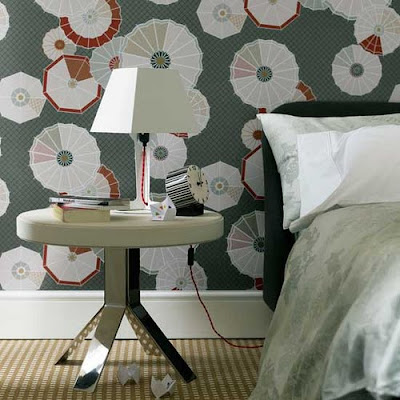
New wallpaper and wall stickers
If you are nice and fast way to



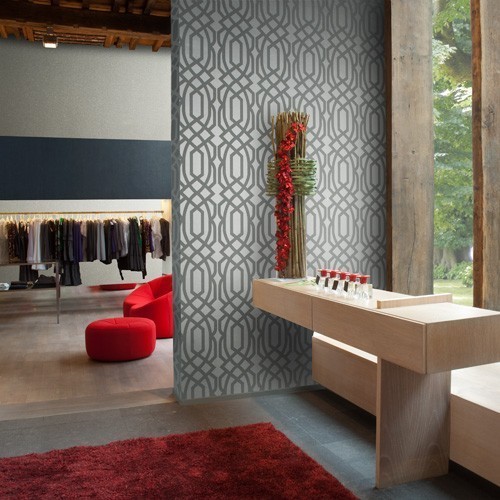
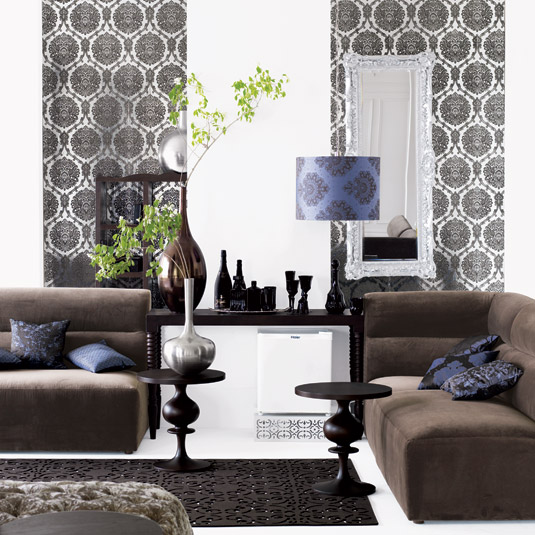
Unusual wallpaper with many interior designers have become very popular lately. These include flocked wallpaper. This wall not only in a variety of projects, which provides many geometric and floral motifs come, but also a feeling of warmth, because you add the flocking. You may make a declaration to each room through the application of a wall, or do you create a cozy, intimate space by the walls.


How ever you decide to use wallpaper in your
Model Homes Forest Hill


















































































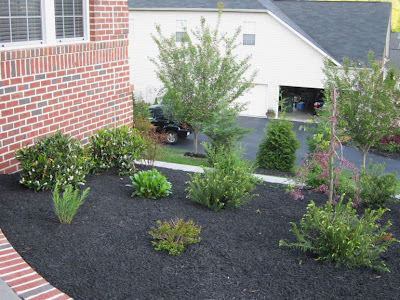









































* photos taken on Sep 4 2011






























* photos taken on Oct 28 2011






























* photos taken on April 4 2012 in Columbia, MD

































* photos taken on Oct 23 2012





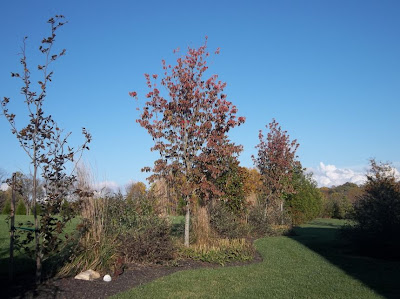
















PHASE 2
BEFORE
* photos taken on Aug 19 2012




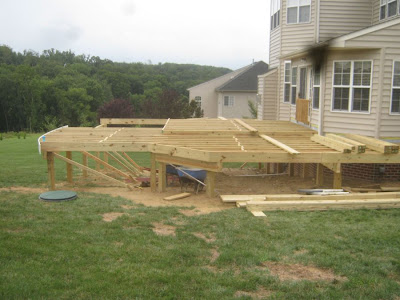


AFTER
* photos taken on Oct 26 2012





























* photos taken on July 15 2013




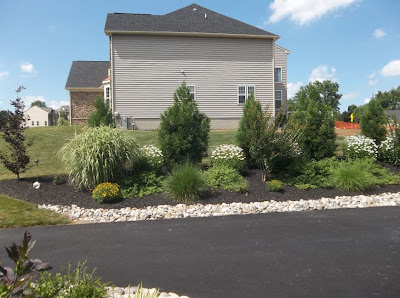































* photos taken on Sep 21 2013


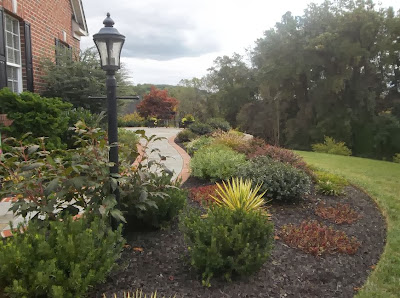



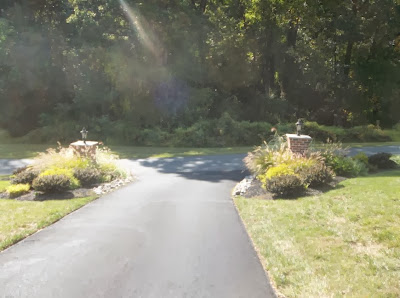






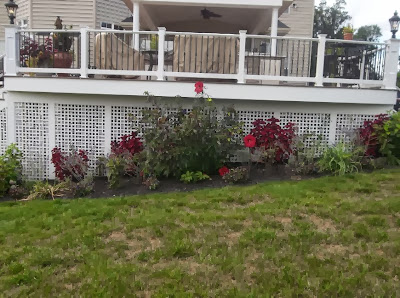







Model Homes - Bel Air
* Before



* After






